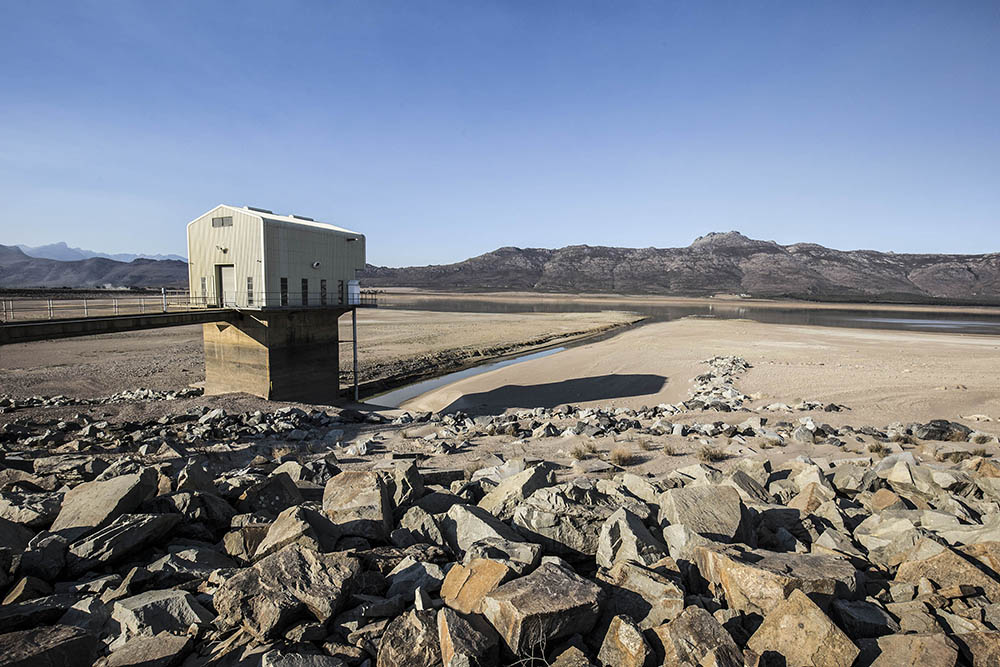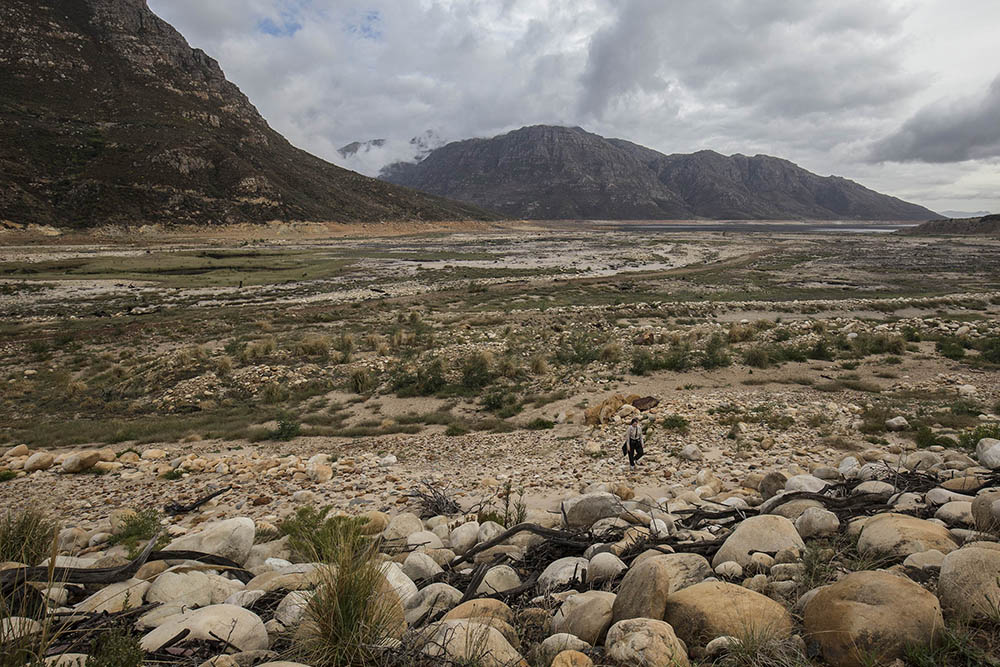Day Zero: Farms take a hit from the Cape water crisis.
NEWS ANALYSIS
The Western Cape will run out of water by the end of August. That’s why religious leaders gathered at the foot of Table Mountain last week, praying for divine intervention. They have had no response.
The cold fronts that normally bring rain from April onwards have failed to sweep in. A high-pressure system off the coast is diverting them away from the parched province. Dam levels are below 20%. Half of that water is unusable because it is contaminated with carcasses and other waste.
The province has used 243-million cubic metres of water in the past year. It now has 159-million cubic metres of usable water left in its dams. To make it to next year the province needs to find an extra 84-million cubic metres of water.
To survive its worst drought since 1904, it also has to rethink its relationship with water, a process that should have started a long time ago. Drought is an inevitable part of South African life. Eight of the nine provinces survive because of the water that gets caught by Lesotho’s towering mountains. Only the Western Cape does not.
Plans to capture and store water are drawn up in “reconciliation scenarios”, overseen by a small unit at the national water and sanitation department. Its Western Cape scenario says 3.2-million people rely on six big dams and the Berg and Breede rivers.
Demand for water in the province will exceed supply by the early 2020s — without a drought. New sources of water need to be found and stored. Planning and construction on this scale usually takes eight years. Options include a new Voëlvlei Dam near Tulbagh (23-million cubic metres of water), tapping into the Table Mountain aquifer (20-million), reusing water (40-million) and desalination (up to 150-million).

The Voëlvlei Dam on May 18 2017. (Ashraf Hendricks, GroundUp)
The reconciliation scenario says that, because of its high cost, desalination is the “last option”. The province says a plant would cost R16.5-billion to build and R1.2-billion a year to operate. A huge amount of electricity is needed to get salt out of seawater and this pushes up the cost. Economic and population growth mean this technology would have to be in place by 2030 anyway.
The drought has fast-forwarded this plan. Two years without rain has resulted in the province using more water than it has. Its total storage capacity is 1.9-billion cubic metres. Theewaterskloof Dam, which supplies half of Cape Town’s water, is losing three million cubic metres a week. On a visit in late May, Minister of Water and Sanitation Nomvula Mokonyane said the dam could keep supplying water for 10 weeks.
To unlock funds and bypass bureaucracy, Western Cape Premier Helen Zille declared the area a disaster zone: “The disaster declaration will accelerate the province’s strategy to ensure that the taps do not run dry.” The province will spend more than R300-million over the next three years.
A small desalination plant along the lines of the emergency plant in Richards Bay, KwaZulu-Natal, is planned and the province will tap into the Table Mountain aquifer. Critical institutions such as hospitals will drill boreholes.
These measures come on top of the water-saving efforts already in place, which include reducing the water pressure to level four restrictions. These measures buy time.
In an average year, meteorologists can generally predict whether it will rain on the Highveld. It is next to impossible to do the same for the Western Cape’s winter rainfall region. The Southern Ocean, which determines the province’s weather, receives a lot less attention than the tropics, resulting in less information on which to base predictions. Coupled with a rapidly changing climate, the reaction of that ocean is still a mystery.

The Berg River Dam on May 11 2017. (Ashraf Hendricks, GroundUp)
The Alliance for Collaboration on Climate and Earth Systems Science, an umbrella group overseen by the national science and technology department, tried to crunch what numbers it could in May. It concluded: “There is no definitive story to tell about this season’s rainfall.”
The earth systems science group concluded that: “The Western Cape needs to prepare for the possibility that this year’s winter season may be drier than normal.” This will “greatly exacerbate” the current drought or, at best, “fail to relieve the current situation”.
What scientists can tell is that the province has been getting hotter and will continue to do so as the world gets warmer. South Africa’s annual climate change report, compiled by the environment department, says: “Both maximum and minimum temperatures have been increasing significantly, accompanied by an increase in extremely hot days and decreases in extremely cold nights.”
The current drought will become a norm in the next few decades instead of being a once-a-century event.
South Africa’s dams give the country a buffer of two and a half years during times of drought. Breaking the two-year drought across the other eight provinces took just five days of heavy rain in February, thanks to tropical cyclone Dineo.
But the Western Cape cannot rely on such a dramatic intervention. The nearest major rivers are too far away. No infrastructure can bridge that divide.
To survive, the province and its metropolis will have to become communities of the future. Seawater will be desalinated, using new technologies that use far less electricity than current ones. Municipal water will be reused, such as in Windhoek and Beaufort West. Homes will catch and store rainwater, and use grey water.
A leaf will be taken out of California’s book. This area has just come out of a five-year drought, partly because the state gave grants to people to convert their lawns into indigenous gardens. Irrigation for farms and wine estates will become ever more efficient. Water use will be at the heart of all development.
Faced with the possibility of no water by August and a drier than normal winter, the Western Cape might just show the rest of South Africa how to survive in a world where climate change makes that survival more difficult. If it doesn’t, catastrophe looms.